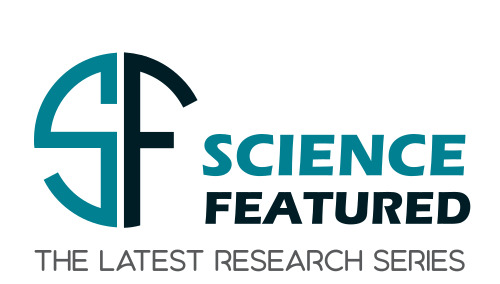Modern poultry farming relies heavily on machine incubation to hatch eggs efficiently and in large quantities. This technique, where eggs are placed in controlled environments to develop without a mother hen, not only replaces traditional hen incubation but also streamlines egg handling, saving time and increasing productivity. However, while chicken egg incubation methods have been perfected over the years, duck eggs present unique challenges due to their larger size and weight. Current industry practices result in hatch rates that are satisfactory but still leave room for improvement. With better strategies, there is significant potential to enhance both the survival and quality of ducklings, benefiting farmers and the industry alike.
Efforts to improve poultry farming practices have led to a groundbreaking advancement in duck egg incubation. Researchers from Jiangsu Academy of Agricultural Sciences and Zhongkai University of Agriculture and Engineering , led by Professor Zhendan Shi, have developed a novel method to optimize the way duck eggs are turned during incubation. Their findings, published in Poultry Science, show that adjusting the angles at which eggs are turned during their development can significantly improve hatch rates and produce healthier ducklings. Egg turning, a crucial process during incubation, ensures the embryo develops properly by preventing it from sticking to the shell and promoting even nutrient distribution.
Adjustments to traditional egg-turning methods involved experimenting with wider angles and dynamic changes in tilt throughout the incubation process. By increasing the tilt angle early in incubation and then reducing it later, researchers observed significant benefits. “This innovative approach has the potential to revolutionize duck farming,” explained Professor Shi. “Not only does it improve hatch rates, but it also leads to stronger, healthier, and faster growing ducklings.”
The study found that the updated method led to much lower losses during the final stages of embryo development, the critical period when embryos are most vulnerable, compared to traditional practices. This improvement translated into noticeably higher hatch rates, with ducklings emerging stronger and heavier than those incubated using conventional techniques. These outcomes are linked to the improved development of the chorioallantoic membrane, the thin structure inside the egg that supports the embryo by exchanging oxygen and nutrients.
Breakthroughs in this research also revealed underlying biological factors that contributed to the improved outcomes. Scientists discovered that the new turning method boosted the activity of certain genes responsible for growth and development. These include genes associated with absorbing nutrients and promoting healthy growth, such as the growth hormone receptor gene, which plays a role in regulating the body’s ability to grow and repair tissues, and the insulin-like growth factor gene, which supports cell growth and survival. “Our research highlights how simple changes in incubation can have profound effects on the biological processes driving healthy embryo development,” said Professor Shi .
This innovative technique is a game-changer for the poultry industry. By offering a straightforward and scalable solution, it not only enhances the efficiency of hatcheries but also prioritizes the health and welfare of the animals. The results pave the way for future studies to refine these methods and potentially apply them to other types of poultry, creating a ripple effect of benefits across the farming sector.
Journal Reference
Chen F., Zhu B., Guo B., Dai Z., Liu J., Ying S., Huang Y., and Shi Z. “Improving duckling hatchability and quality by optimization of egg turning angle during incubation.” Poultry Science, 2024. DOI: https://doi.org/10.1016/j.psj.2024.103937
About the Authors

Dr. Zhendan Shi is a senior research fellow at Jiangsu Academy of Agricultural Sciences, renowned for pioneering out-of-season breeding in geese, enabling year-round production and boosting farmer profits. After earning his undergraduate degree in animal science at Nanjing Agricultural University, he studied reproductive physiology at Lincoln University in New Zealand, focusing on thyroid-hormone regulation of seasonal breeding. Returning to China in 1992, he joined South China Agricultural University to improve goose reproduction through manipulated lighting regimens, receiving a First Class Science and Technology Award in Guangdong Province. Moving to JAAS in 2011, he developed further out-of-season breeding techniques for northern geese, recognized in 2019 with a Second Class Award from the Ministry of Agriculture and Rural Affairs. He also advanced duck production by optimizing egg-turning angles during incubation, a method adopted nationwide in 2023. Beyond waterfowl, Dr. Shi’s innovations include enhancing ungulate fertility through recombinant inhibin-based vaccines, earning him a Best Researcher Award from Pencis International Research Awards.

Dr. Binbin Guo initially worked as a post-doc fellow in 2019 with Professor Zhendan Shi on improving hatchability of large sized goose eggs. She observed enlarging egg turning angle during incubation not only improved embryo development and hatchability, but also post-hatch growth speed. She also discovered that larger angle egg turning also upregulated gene expression and secretion levels of growth axis hormones. This laid the foundation for the team to develop high efficient incubation technology for goose and duck eggs.

Dr. Fang Chen, research specialist at Institute of Animal Science, Jiangsu Academy of Agricultural Sciences, participated in developing the technique of changing angle of egg turning to further improve duck embryo hatchability by reducing embryo death at the final pre-hatch stage.













































